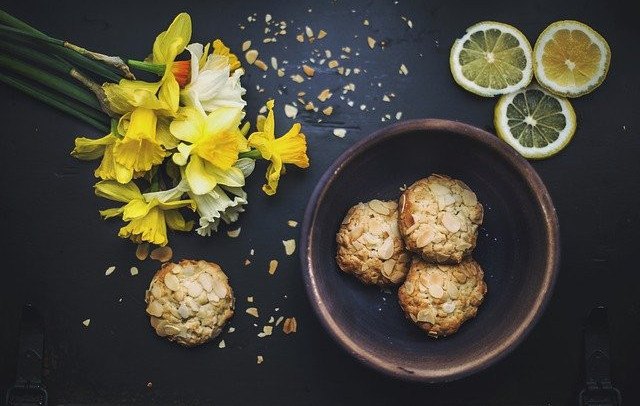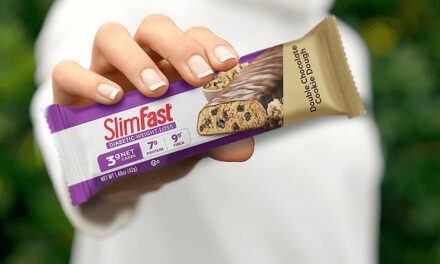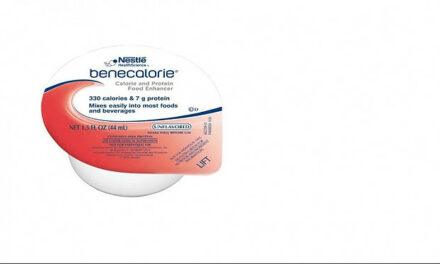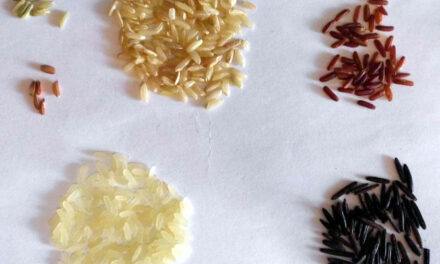In this article, we will learn about biscuits, types of biscuits, and how they affect your journey in managing type 2 diabetes well. Most importantly, we will discuss the question ‘are biscuits good for diabetics’ and when they are bad for people with type 2 diabetes.
Let’s start rolling…
Living with diabetes requires a whole lot of changes to manage one’s ailment. One major change is in dietary routines, by cutting down on all sugary food, with the aim of maintaining a normal blood sugar level.
Even so, people with diabetes are still faced with a craving for sweets caused by the imbalance in their blood sugar level, and when left uncontrolled, such cravings can alter the dietary plan and do more damage to their health status.
Biscuits, being one of the most enjoyable and popularly consumed snacks for both adults and children in this generation, can be quite effective in treating sweet cravings. However, its high sugar content as well as the fat content, suggest that the snack is unsuitable for a person with diabetes.
There have, however, been a few modifications to its original methods of preparations to suit a person with diabetes. Other nutritional contents in the biscuit, to be further discussed, are as well favorable to a person with diabetes.
What Are Biscuits?
Biscuits are baked flour-based snacks. These long-lasting snacks, due to their low moisture content, makes them constantly available and consumed in most homes.
Biscuits are majorly light, dry and crunchy snacks producing crumbs as it is consumed, apart from those made in North America. These crumbs can form part of our regular homemade meals to ensure a healthy balanced diet.
Biscuits basically consist of the following ingredients:
For the leavened biscuits, however, baking soda forms part of the basic ingredients.
Biscuits are usually sweet or savory to taste, which is depending on the way it is made. And the method of biscuits preparations varies with locations.
As in North America, biscuits are usually soft and flaky due to the addition of baking soda to the processing ingredients, different from others around the world.
Some Other Names of Biscuits
A dry, crispy and sweet or savory baked snack is referred to as biscuits in most parts of the world. However, biscuits could also be called cookies, crackers and scones.
Cookies
This is the most common among other names to refer to a biscuit. This term is common among people living in America and Canada. The term cookies are used to refer to all sweet biscuits.
Most cookies, by the Americans, are usually larger and softer than the conventional biscuits. They are usually denser and maybe baked with chocolate chips added to them.
Some traditional Americans believe that cookies could not be a substitute name for biscuits, but rather cookies are under the types of biscuit. But being dry and low in moisture, sweet and crispy, permit it to be called biscuits.
Crackers
Crackers are biscuits that taste rather salty and savory.
In American English, a cracker is used to refer to a salty biscuit. They are baked into different shapes and different textures and designs. They are usually drier, crunchier and crispier and unleavened.
Scones
Scones are what the English man and Scottish refer to as biscuits. Scones are sweet and large biscuits. They are similar to the American cookies with the added chocolate chips, raisins or mixed fruits. They have a hard and dry crust but are softer within, more like dried cakes.
Types of Biscuits and Their Nutritional Content
There are several products of biscuits that differ in shape, texture and taste. Bakers design some products according to the season and some according to the location of preparation, or the community’s health needs.
According to methods of preparations and meeting nutritional needs, these biscuits products are grouped majorly into the following:
1. Digestive biscuit
The digestive biscuit is popularly consumed in the United States. They can also be called sweet-meal biscuits because of the whole wheat content.
Unlike most biscuits, it is moderately sweet and best eaten when dunked in tea or milk.
Digestive biscuit could also be eaten with a coat of chocolate, so as to improve its sweetness. Digestive biscuit is made up of fat, protein, sugar, fiber and sodium, with sugar forming the bulk of its content.
And, for each serving size of 14g, its total calorie content is 65kcal, with much of it supplied by sugar.
2. Short Bread
Short Bread originates from Scotland. It is found to be one of the world’s favorite biscuits. Shortbread is a rather soft, but yet firm and crunchy biscuit because it contains much more butter than most biscuits.
Its nutritional content is supplied by wheat or corn flour, butter and sugar.
It has a total calorie content of 40kcal in a 100g of biscuit, provided by the sugar and the high-fat content.
3. Oat biscuit
The most popularly consumed oat biscuit is the Hobnob biscuit.
It provides a total caloric supply of 190kcal in two cookies weighing 36g. This caloric value is supplied by its content rich in saturated fat, sugar and fibers. An oat biscuit also supplies sodium and proteins to its consumer.
4. Custard cream
The custard cream is a sandwich-type biscuit filled with a custard flavored cream. This biscuit could be homemade or commercially made. It is made up of plain flour and large amounts of sugar and fat.
Both the filling and the biscuit has high caloric values. A single biscuit of custard cream weighing 12g, produce a total calorie of 59kcal, due to the sugar, saturated and unsaturated fat.
5. Rich tea
Rich tea is among the most popularly consumed biscuits. It can also be called tea biscuit. Its name is derived from a special ingredient, malt extract, used in producing rich tea biscuit.
The rich tea is best eaten dunked in milk or coffee. Its nutritional benefits are supplied by wheat flour, sugar, vegetable oil and malt extract. The rich tea supplies a total calorie of 46kcal in 10g of biscuits.
These conventionally eaten biscuits are highly rich in sugar and, like other snacks, supply lots of calories to their consumers.
How Sugary Are Biscuits Compared to Other Snack Options?
Other than biscuits, there are other commonly consumed snacks. Two other snacks most commonly consumed are; Bread and Cakes. All three snack are baked and are flour-based. These snacks differ from each other in the combination of ingredients and the methods of preparations
One way of analyzing the sugar contents of these snacks is by comparing their glycemic index value. A Glycemic index value is one that checks the sugar level of a specific food by measuring the blood sugar level a few hours after the intake of such food.
The glycemic index ranges from 0 to100, and could be measured as high, medium or low.
- A high glycemic snack is one that has a GI index of over 70. Pure glucose and sugar have a GI index of about 100, and thus can affect blood sugar level dangerously if taken irrepressibly.
- A low glycemic index is one below 50 and common to most carbohydrate foods.
- And the medium GI is one between 50 and 70.
As amongst these 3 listed snacks, Biscuits and Cakes are usually labelled as high glycemic. The conventional biscuit averagely has a glycemic value of about 65 – 70, and Cakes also has a high glycemic value greater than 70. And, Bread has a low to medium glycemic value. Therefore, it can thus be evaluated that among the 3 snacks, Bread, is less sugary than biscuits and cakes, which is followed closely by biscuits and then the cakes.
Constantly looking after the GI of consumed food is especially important for individuals on diets to reduce their sugar levels, e.g. diabetics.
Type 2 Diabetics
People living with type 2 diabetics are especially prone to raised glucose level, which could be life-threatening. Type 2 diabetes is a medical condition whereby the body cannot metabolize and store glucose effectively, which leads to the retainment of excess glucose in the blood.
A type 2 patient has high glucose in his blood mainly because:
- The body lacks an important enzyme called insulin. Insulin is the enzyme that enables the body to metabolize and store glucose in the body. The absence or reduction of the body’s insulin level will affect glucose metabolism leading to increased blood glucose levels.
- Type 2 diabetics could also be a result of Insulin Resistance (IR) by body tissues. When there is insulin resistance, tissues of the body that metabolizes glucose and store glucose stop responding to the insulin enzymes signals, and this increases blood sugar level.
Type 2 diabetics could be detrimental and life-threatening. This is because high blood sugar affects vital organs in the body and deteriorates them. Organs like the retina of the eyes, the liver, the heart and nerves of the body are at risk of uncontrolled diabetes.
These dangerous effects of diabetes can be controlled, and one’s lifespan increased and improved by properly maintaining the condition.
Maintaining diabetes has a major aim, which is to keep the blood glucose level at a normal range of 70 – 110mg/dl. This can be done in the following ways:
- Regularly checking one’s blood glucose levels
- Eating low caloric and low glycemic foods
- Regularly exercising
- Proper rest and sleep
- Wearing protective clothing (when neuropathy sets in)
With that background knowledge about type 2 diabetes, now let’s turn on to the biscuits to address our main question today. Are biscuits good for people with diabetes?
Can Diabetics Eat Biscuits?
Dietary routines made up of low glycemic foods is the most important way of maintaining diabetes. However, an occasional treat is not in any way harmful to the diabetic, when there are cravings for sweets.
According to the American Diabetic Association (ADA), high-sugar-containing snacks like biscuits, cakes and chocolates, could be consumed by people with diabetes, as long as it goes along-side healthy meals from time to time. A healthy meal with a low caloric supply will complement the high glycemic index of the biscuit and its effect on the blood level of a person with diabetes.
People with diabetes could also consume lower glycemic biscuits, as among the conventional biscuits. And biscuits like the plain digestive, during sweet cravings can be eaten instead of a chocolate biscuit, which will be more effective on blood sugar level.
Tip: Heard about BelVita biscuits? Follow the link to watch the BelVita biscuit review.
Are Biscuits Good for Diabetics?
The biscuit is a high glycemic snack, as has been reviewed above. It produces high amounts of calories from its sugar and fat content, making it bad for a diabetic and those watching their weights.
However, other nutritional contents present in some types of biscuits make them good for diabetic’s consumption. One such biscuit is the whole grain crackers.
Wholegrain crackers
- Wholegrain crackers are salty biscuits that are drier and crispier.
- The whole grain cracker is a good and healthy food for a person with diabetes because of its added nutritional values provided by its high fiber content, its protein content and its lesser sugar content.
- To further reduce the spike in sugar lever from consuming this snack, experts suggest that this is eaten with healthy cheese, as the healthy fat contained in it will slow down the uptake of sugar from the carbohydrates.
- Plain digestive due to its high fiber content as well.
- Hobnob biscuits produced from oatmeal, also rich in fiber.
Therefore, it can be concluded that traditional biscuits are not healthy for a person with diabetes due to their low fiber content. However, some biscuits with high fibers and protein contents add nutritional values to a person with diabetes.
When Are High-Fiber Biscuits Bad for Diabetics?
High-fiber containing biscuits like the plain digestive, oat biscuits or crackers are better and healthier than the conventional cookies and cream biscuits but still, could be quite harmful to a person with diabetes. This is because they still largely contain sugar.
Biscuits become bad for a person with diabetes when and if you are:
- Taking too much of biscuits
These relatively healthy biscuits are only meant for the sweet-tooth, to satisfy sweet cravings, and therefore only about 3 to 5 biscuits must be eaten in 2 weeks.
- Eating biscuits as breakfast
Even in a diabetic diet, breakfast is the most important meal of the day. A good breakfast requires a wholesome meal. However, it can be taken with an unsweetened drink like coffee.
- Eating just biscuits
The recommendations from the American Diabetic Association suggest that for treats like biscuits to be eaten, they must go along with healthy food. Food with high protein content and with healthy fats.
What is the Best Time to Eat a Biscuit?
For a person with diabetes, the conventional high glycemic biscuit must not be taken regularly. As has been said before, the American Diabetic Association suggests that sweet treats like biscuits are only to be eaten once in a while, and if they ‘must be eaten’, they must form part of a healthy meal.
A few Nutritionists have suggested that taking about 1 to 3 biscuits per week is best for a type 2 diabetic’s dietary routine.
Although, the low glycemic biscuit, made to suit the dietary plan of a person with diabetes, is safe to be eaten by a diabetic daily in concise quantity.
Is Morning Tea and A Biscuit Good for a Diabetic?
One of the most enjoyed and traditional ways of taking a biscuit is with tea or coffee. Those are the key reasons why homes store jars of biscuits for breakfast.
For people with diabetes, however, eating a biscuit with morning tea as breakfast is not the best choice. Breakfast is the most important meal of the day. Eating a high carbohydrate food like a biscuit as breakfast will cause a spike up in the blood sugar level of a person with diabetes and make it increasingly challenging to maintain all day.
A low glycemic biscuit and a low glycemic tea can be taken as breakfast for a person with diabetes, as the low glycemic meal will slowly release glucose in the blood and thus, maintain the blood sugar level.
What is Low Glycemic Biscuits?
The high glycemic index of the conventional biscuit propagated the low glycemic biscuit production to suite a low glycemic diet.
Studied have shown that the low glycemic diet, which is based on the glycemic index of food, is best for diabetics and people aiming to lose weight. A low glycemic diet also helps prevent the development of cardiovascular diseases and type 2 diabetics in adults and children.
Thus, the best biscuits for a person with diabetes is a low glycemic biscuit. It is one whose glycemic index is lower than 50. Among other low GI foods, these biscuits will allow for a gradual release of glucose in the blood and prevent sudden spikes in blood sugar level.
It is highly recommended for people with diabetes wishing to satisfy the sweet tooth and maintain their blood sugar at the normal range.
Best Low Glycemic Biscuit for Diabetics
In the production of low glycemic biscuits, carbohydrate sugar and sweeteners are avoided and substituted with oatmeal, nuts and millets.
The following are a few best low glycemic biscuits well suited for type 2 diabetics:
- Diabliss millet cookies
This brand of biscuits is made from millet, as the name implies. Millets are whole wheat grains, with a coarse texture. Millets substitutes for flour and sugar and thus allows for a biscuit of low glycemic index, 20.
Its added nutritional values are due to its low trans-fat content and its zero-cholesterol content.
In addition to maintaining blood sugar level, which has been scientifically proven, it also prevents type 2 diabetes in prediabetics. Its high fiber content aid digestion in the body. Its vitamins and minerals content are as well healthy for a person with diabetes.
- Diabodelite multi-grain sugar-free cookies
These multi-grain cookies contain wheat grains, oat and soya and others to replace the all-purpose flour. It provides a high fiber biscuit, a zero-cholesterol snack and low trans-fat content, which all together balances the sugar level in blood.
Though tasty, it has a low glycemic index, which helps to manage blood sugar level effectively. Nutritionists often recommend them for people with diabetes to be eaten daily. It is also recommended for pre-diabetics, and those wishing to lose weight.
- Digestive oat and almond biscuits
These biscuits are rich in fiber and proteins. The fiber supplied by the digestive oat and the proteins by the almond. It has a low glycemic index and thus gradually releases sugar in the body.
It is effective for preventing type 2 diabetes and in reducing weight due to its low trans-fat content.
- Diabetic almond biscuit
These biscuits are low in glycemic index, and yet as tasty as your conventional biscuit. The digestive almond is rich, low in trans-fat, has no cholesterol, and thus very effectively manage diabetes.
Alternative Options for Biscuits Craving
Apart from biscuits, there is a list of other satisfying and yet, healthy snacks. These, instead of the conventional biscuits, could be eaten occasionally to satisfy one’s cravings.
- Apple and peanut butter
These two, in combination, form a snack that gives every desirable and tasty experience, as a cream biscuit would. This snack is a better alternative to conventional biscuit because all its fat and sugar contents are naturally imbedded, and not added and processed into it, as in baked biscuits.
- Dried fruits
Even though dried fruits contain a lot of sugar; this snack is better than biscuit, which has refined sugar added to it. The amount of natural sugar in the fruits, even though high, well balances the caloric effects of sugar in the body.
- Bread sticks
Mini bread sticks, being dry, savory and crispy, can provide that crunchy biscuit desire. It has a low calorie and low sugar content, accounting for its low glycemic index. It is, therefore, a tasty and healthy alternative to biscuits.
Conclusion
Regulating the intake of common snacks like biscuits is very important in managing your diabetes. As the high sugar content of a traditional biscuit is not healthy for people living with imbalances in blood sugar level, the diabetics.
Food processing industries, in ways of promoting health, have also modified food and snack preparations, for the benefit of prediabetics, diabetics and those on a low glycemic diet.
















